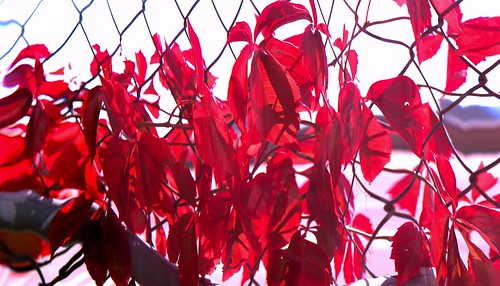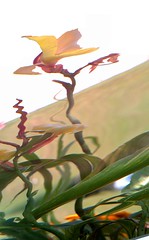 Part photography, part performance art filtered through an algorithmic structure, Nathaniel Stern's Compressionism uses a document scanner as the tool of choice, which takes on the dual roles of paintbrush and camera: as the scanner bulb moves along its path, the artist follows his own path hovering over various objects and textures. Sometimes linearly, sometimes erratically, he moves according to his own performative instincts. With this kinetic approach, Stern bridges a certain gap between his body and the end result. Whereas many disciplines of traditional photography require the artist to remain perfectly still, Compressionism encourages the opposite.
Part photography, part performance art filtered through an algorithmic structure, Nathaniel Stern's Compressionism uses a document scanner as the tool of choice, which takes on the dual roles of paintbrush and camera: as the scanner bulb moves along its path, the artist follows his own path hovering over various objects and textures. Sometimes linearly, sometimes erratically, he moves according to his own performative instincts. With this kinetic approach, Stern bridges a certain gap between his body and the end result. Whereas many disciplines of traditional photography require the artist to remain perfectly still, Compressionism encourages the opposite.
After a session with the scanner (see video below), the images produced are bizarre, abstract renditions of the source material, which are, of course, compressed to a nearly unrecognizable state. Stern then takes these images and, using a software program, he expands them to their original dimension. At this stage, you have beautiful, even graceful representations of objects and scenery. The minutia of his movements are blown up, and exaggerated on the expanded prints.
The name Compressionism is a play on the classic model of “isms” used to describe different movements of art throughout history and Nathaniel Stern is highly aware of that fact. Each shake of the scanner and refraction of the light collaborate to produce pieces that look like a cross between Monet and Dali.
The machine that Stern uses to create these images is an eclectic device of his own creation. The scanner fits upside down into a plastic bay with handles. Attached are a battery pack and a laptop stand. These elements all integrate into a single apparatus that can then be clipped into a harness worn around his shoulders. This vaguely comical construction is useful in giving Stern the maximum range of motion for his performances. The array of places he can traverse to ranges from up buildings and down trees, and even wading through creeks and lily ponds. This versatility gives him access to nearly any surface he considers inspirational for his work.


